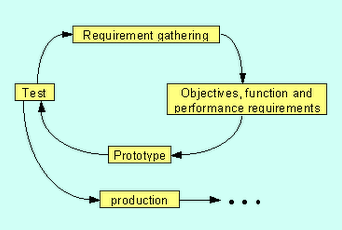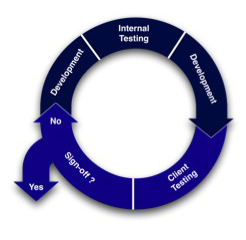 All papers examples
All papers examples
Disciplines

- MLA
- APA
- Master's
- Undergraduate
- High School
- PhD
- Harvard
- Biology
- Art
- Drama
- Movies
- Theatre
- Painting
- Music
- Architecture
- Dance
- Design
- History
- American History
- Asian History
- Literature
- Antique Literature
- American Literature
- Asian Literature
- Classic English Literature
- World Literature
- Creative Writing
- English
- Linguistics
- Law
- Criminal Justice
- Legal Issues
- Ethics
- Philosophy
- Religion
- Theology
- Anthropology
- Archaeology
- Economics
- Tourism
- Political Science
- World Affairs
- Psychology
- Sociology
- African-American Studies
- East European Studies
- Latin-American Studies
- Native-American Studies
- West European Studies
- Family and Consumer Science
- Social Issues
- Women and Gender Studies
- Social Work
- Natural Sciences
- Anatomy
- Zoology
- Ecology
- Chemistry
- Pharmacology
- Earth science
- Geography
- Geology
- Astronomy
- Physics
- Agriculture
- Agricultural Studies
- Computer Science
- Internet
- IT Management
- Web Design
- Mathematics
- Business
- Accounting
- Finance
- Investments
- Logistics
- Trade
- Management
- Marketing
- Engineering and Technology
- Engineering
- Technology
- Aeronautics
- Aviation
- Medicine and Health
- Alternative Medicine
- Healthcare
- Nursing
- Nutrition
- Communications and Media
- Advertising
- Communication Strategies
- Journalism
- Public Relations
- Education
- Educational Theories
- Pedagogy
- Teacher's Career
- Statistics
- Chicago/Turabian
- Nature
- Company Analysis
- Sport
- Paintings
- E-commerce
- Holocaust
- Education Theories
- Fashion
- Shakespeare
- Canadian Studies
- Science
- Food Safety
- Relation of Global Warming and Extreme Weather Condition
Paper Types

- Movie Review
- Essay
- Admission Essay
- Annotated Bibliography
- Application Essay
- Article Critique
- Article Review
- Article Writing
- Assessment
- Book Review
- Business Plan
- Business Proposal
- Capstone Project
- Case Study
- Coursework
- Cover Letter
- Creative Essay
- Dissertation
- Dissertation - Abstract
- Dissertation - Conclusion
- Dissertation - Discussion
- Dissertation - Hypothesis
- Dissertation - Introduction
- Dissertation - Literature
- Dissertation - Methodology
- Dissertation - Results
- GCSE Coursework
- Grant Proposal
- Admission Essay
- Annotated Bibliography
- Application Essay
- Article
- Article Critique
- Article Review
- Article Writing
- Assessment
- Book Review
- Business Plan
- Business Proposal
- Capstone Project
- Case Study
- Coursework
- Cover Letter
- Creative Essay
- Dissertation
- Dissertation - Abstract
- Dissertation - Conclusion
- Dissertation - Discussion
- Dissertation - Hypothesis
- Dissertation - Introduction
- Dissertation - Literature
- Dissertation - Methodology
- Dissertation - Results
- Essay
- GCSE Coursework
- Grant Proposal
- Interview
- Lab Report
- Literature Review
- Marketing Plan
- Math Problem
- Movie Analysis
- Movie Review
- Multiple Choice Quiz
- Online Quiz
- Outline
- Personal Statement
- Poem
- Power Point Presentation
- Power Point Presentation With Speaker Notes
- Questionnaire
- Quiz
- Reaction Paper
- Research Paper
- Research Proposal
- Resume
- Speech
- Statistics problem
- SWOT analysis
- Term Paper
- Thesis Paper
- Accounting
- Advertising
- Aeronautics
- African-American Studies
- Agricultural Studies
- Agriculture
- Alternative Medicine
- American History
- American Literature
- Anatomy
- Anthropology
- Antique Literature
- APA
- Archaeology
- Architecture
- Art
- Asian History
- Asian Literature
- Astronomy
- Aviation
- Biology
- Business
- Canadian Studies
- Chemistry
- Chicago/Turabian
- Classic English Literature
- Communication Strategies
- Communications and Media
- Company Analysis
- Computer Science
- Creative Writing
- Criminal Justice
- Dance
- Design
- Drama
- E-commerce
- Earth science
- East European Studies
- Ecology
- Economics
- Education
- Education Theories
- Educational Theories
- Engineering
- Engineering and Technology
- English
- Ethics
- Family and Consumer Science
- Fashion
- Finance
- Food Safety
- Geography
- Geology
- Harvard
- Healthcare
- High School
- History
- Holocaust
- Internet
- Investments
- IT Management
- Journalism
- Latin-American Studies
- Law
- Legal Issues
- Linguistics
- Literature
- Logistics
- Management
- Marketing
- Master's
- Mathematics
- Medicine and Health
- MLA
- Movies
- Music
- Native-American Studies
- Natural Sciences
- Nature
- Nursing
- Nutrition
- Painting
- Paintings
- Pedagogy
- Pharmacology
- PhD
- Philosophy
- Physics
- Political Science
- Psychology
- Public Relations
- Relation of Global Warming and Extreme Weather Condition
- Religion
- Science
- Shakespeare
- Social Issues
- Social Work
- Sociology
- Sport
- Statistics
- Teacher's Career
- Technology
- Theatre
- Theology
- Tourism
- Trade
- Undergraduate
- Web Design
- West European Studies
- Women and Gender Studies
- World Affairs
- World Literature
- Zoology
Lifecycle Models, Research Paper Example
Hire a Writer for Custom Research Paper
Use 10% Off Discount: "custom10" in 1 Click 👇
You are free to use it as an inspiration or a source for your own work.

The prototype model
The Prototype Model, as illustrated in Fig 1, is a reduced functionality model that enables the systems developer to build the early stages of a systems development project. The concept being to build a scaled down version of the real systems development in order to test functionality and operability. If built correctly this can save the systems developer significant amounts of time. Prototypes can be quickly assembled and thrown away, going through a repetitive cycle until the right solution is found. (Langer, A.M. 2007).

Figure 1 The Prototype Model
Advantages
- Rapid Application development capability
- Economies of Scale
- Repetitive process, facilitating correct solution
- Throw away concept
Disadvantages
- Some argue that it involves additional unnecessary costs
- The concept of a ‘quick and dirty’ method that lacks sophistication
- Developer may make compromises to determine fast expedient solution that lacks quality requirements.
Rapid application development model
This method is based upon a linear application development approach. RAD is used for high speed technology build process. The approach is based upon providing the basic system functionality without the development of unnecessary “bells and whistles”. This provides a rapid cost effective no frills approach to systems development work. Fig 2 illustrates the cyclical events of RAD application development. (Shelly, G.B 2009)

Figure 2: Rapid Application Development Model
Advantages
- Optimum business systems solution
- No unnecessary frills keeping development costs to a minimum
- Supports most business modelling approaches
- Supports Data Modelling
- Very cost effective
- Component based construction approach
Disadvantages
- Provides minimum solution to requirements. No value added components
- May represent only a partial not full systems solution
- Prone to developers taking short-cut measures
- Needs to be fit for purpose
V-Model
One of the most widely accepted systems development models. Provides a number of discrete phases within a systems lifecycle development context. Based upon a number of discrete components that include: Requirements Analysis, System Design, Architecture Design, Module Design and Coding. This method approach is extremely thorough and facilitates sign off and approval on each stage before proceeding to the next stage. (Wasson, C.S. 2006)
Advantages
- Completeness – structured systems development lifecycle model build
- Preview each stage and approve content
- Integrated systems development and design concept
- Testing is early saving time and effort
- Reduces costs of defects as these are discovered in early stages of development
- Rapid application development method
Disadvantages
- Extremely rigid approach and lack flexibility in development and design process
- It is more suitable to large scale systems applications
- Processes need to be established in order that the method can implement them
The systems lifecycle model
The Information Systems Lifecycle is essentially a cascade approach towards the development of an information system, Fig 4 refers. It essentially consists of four main phases of development i.e. (1) Analysis (2) Design (3) Construction and Implementation ( 4) Review and Maintenance. These are further split down into a number of sequential steps that help in defining the logical from the physical components of the system build process.
Illustration Case Study Approach | Small Photography business
In developing the requirements for a new computer time entry system, the following lifecycle steps would take place:
Analysis | Feasibility Study | Examination of alternative approaches, together with cost/benefit analysis. Might consider three options (1) Re-engineering of existing system, (2) New custom build software approach (3) A Custom off the shelf package
Analysis | Requirements Analysis – Complete a functional specification of requirements
Design | Complete the logical and physical design of the system
Implementation | Develop the code for the system, complete user, module and integration testing, convert and implement the system
Review and Maintenance – Go live and put the system into a maintenance environment for fixes, new releases and updates.
Future Trends in Lifecycle Modelling
Future trends are moving more towards open architecture and concepts of cloud computing. Cloud computing seems to offer a number of significant advantages to the CIO. This approach is particularly attractive to the small-medium sized business that has limited funds to invest on more expensive IT infrastructure and equipment.
Fig 5 Illustrates the concept of cloud computing. It permits the user to gain access to the firm’s information via a wide range of portable computer devices including that of smart phones, tablets, laptops, notebooks etc. This brings the whole range of the business applications to your portable PC via a wireless or other internet connection. It is the ultimate portability concept for the travelling Executive. The migration however involves a number of serious business considerations. The two prime risks are the loss of control and security over the firm’s private data (information) and the lack of transparency from the Cloud hosting service provider in terms of storing and processing your data (Kshetri, 2011)
References
Gary B. Shelly, H. J. (2009). Systems Analysis and Design (8 ed.). New York: Cengage Learning.
Kay, R. (2012, 2 3). QuickStudy: System Development Life Cycle. Retrieved from Computerworld: http://www.computerworld.com/s/article/71151/System_Development_Life_Cycle
Kshetri, N. (2011). Privacy and security issues in cloud computing. Greensboro, USA: University of North Carolina.
Langer, A. M. (2007). Analysis and Design of Information Systems. New York: Springer.
Microsoft Corporation. (2012, 2 12). Testing Methodologies. Retrieved from Microsoft Corporation: http://msdn.microsoft.com/en-us/library/ff649520.aspx
University at Albany / SUNY. (2012, 2 3). A Survey of System Development. Retrieved from University at Albany: http://www.ctg.albany.edu/publications/reports/survey_of_sysdev/survey_of_sysdev.pdf
Wasson, C. S. (2006). System Analysis, Design, and Development: Concepts, Principles, and Practices. New York: John Wiley & Sons.

Stuck with your Research Paper?
Get in touch with one of our experts for instant help!

Time is precious
don’t waste it!
writing help!


Plagiarism-free
guarantee

Privacy
guarantee

Secure
checkout

Money back
guarantee

